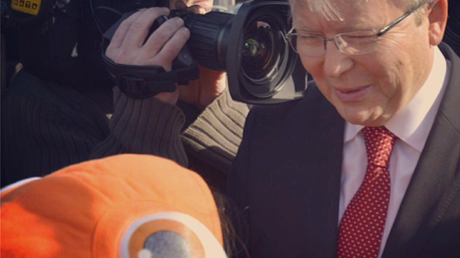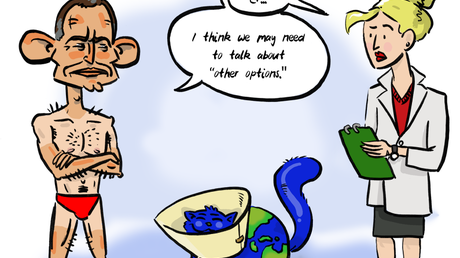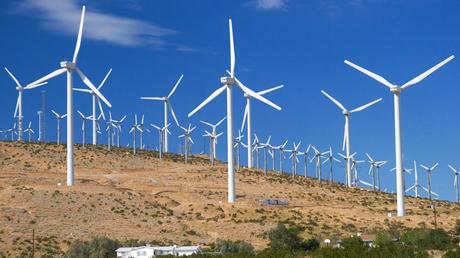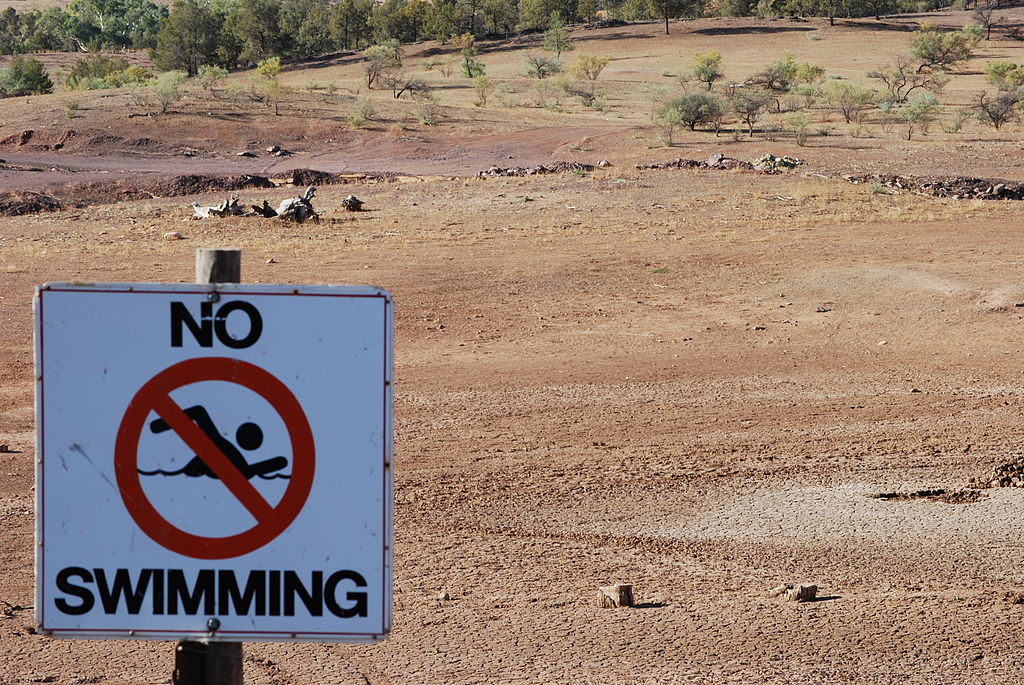CLIMATE CHANGE is a dangerous political issue.
So far it has helped unseat three prime ministers - John Howard, Kevin Rudd, Julia Gillard; and one opposition leader - Malcolm Turnbull. It helped determine to the outcomes of the 2007 and 2010 federal elections. It will be a battleground issue in this year's election as well, where attention will focus on three issues – the carbon tax, climate-budget black holes, and leadership.
What is missing here? Actually, a debate about the real threat of global warming
The carbon tax debate Mark 2 is already underway. Mr Rudd’s promise this week to introduce an emissions trading scheme (ETS) by mid 2014 - a year earlier than previously planned - aims to bury the carbon tax.
As a political move it is of ambiguous value. It reminds us that the ETS is unfinished business from his last time in office. It also gives credence to the Coalition’s claim that the carbon price is too high.
On the other hand, bringing the introduction of the trading scheme forward will reduce the carbon price. A national ETS linked to the international carbon market means the Australian price of carbon will fall from $24/tonne to perhaps as low as $7-10/tonne (the current European price). Energy prices are also predicted to fall – Labor predicts an average saving for households of around $380 in 2014/15, including around $150 saved on electricity bills. This shift will puncture residual criticisms of Australia’s ‘high’ carbon price.
The Opposition Tony Abbott is already calling the ETS a carbon tax by another name. His original 2009 criticisms of the carbon pollution reduction scheme (CPRS) are restated, unrevised, in the CPRS. However public and industry support – or at least grudging tolerance - for the carbon price is increasing and his apocalyptic opposition now seems overstated.
Emissions trading schemes exist in Europe and in 12 American and Canadian states and provinces (including California, the world’s sixth biggest economy), and a national scheme will be introduced in China by 2015. The move wedges the Coalition, which now has to argue why a market-based mechanism favoured internationally and integrated into international markets is bad for Australia.
Nevertheless, a cut-price ETS is poor policy: it will not drive abatement strongly. This opens up grounds for criticism by the Greens and the scheme could again run into trouble in the Senate, as it did in 2009 – although it is unlikely to be blocked.
The Coalition’s Direct Action Plan
All this focuses attention on the Coalition’s alternative, its Direct Action Plan (DAP). The DAP offers a ‘reverse auction mechanism’, using an Emissions Abatement Fund to encourage companies to bid to the government to pay for their least-cost abatement measures. Both this measure and the DAP’s promised approach to boost to renewable energy – including an additional one million solar homes by 2020 – are light in detail. Other features, such as the emphasis on carbon sequestration in soils, are widely regarded as expensive and technically infeasible.
Overall, the DAP echoes voluntary measures that failed during the Howard era. Without a cap on emissions – the critical part of the cap-and-trade ETS - it is unclear how the DAP could help Australia hit its weak 2020 emissions reduction target of at least 5% below 2000 levels. It cannot deal with tougher targets.
Climate budget black holes
The second issue is the cost of weakening or ending the carbon price. Bringing the ETS forward will cut projected revenue by around $3 billion in 2014 - depending on the European carbon price, the presence or absence of an ETS floor price (currently abolished) and the limits to trade in international credits.
In response, rather than reducing subsidies and compensation to fossil fuel producers, Labor has tightened the fringe benefits tax for cars, saving $1.8 billion. But it has also reduced funding to the popular Clean Technology Investment Program (funding solar PV installation and energy efficient lighting), the biodiversity fund and the farming support fund.
A cut-price ETS weakens the incentive for abatement. These cuts weaken it further.
The Coalition’s climate budget is even more vulnerable. Abbott has promised to continue compensation to households and industry (worth $4.8 billion) and to establish an Emissions Reduction Fund (costing $3.2 billion over four years).
Moreover, ending the carbon tax before mid-2014 would require additional compensation to industry for carbon permits held. So will the promise to dishonour the contracts established by the Clean Energy Finance Corporation. Without the revenue of a carbon tax or ETS, the Coalition’s funding gap is at least $5.6 billion next year.
Climate Leadership
This is the debate we need to have if climate is to be addressed effectively in this election. But don’t hold your breath
Last, the leadership issue plays into the climate space in several ways. Mr Rudd, the ‘climate believer’, may choose to differentiate himself from Mr Abbott the ‘climate confused’, who is on record with an exceptionally wide range of views about whether or not global warming is happening, is caused by humans, or is a problem.
Mr Abbott’s latest statement about emissions trading being ‘a so-called market in the delivery of an invisible substance to no one’ has already been criticized as evidence of his failure to understand how cap-and-trade markets work, and suggestive of a deeper level of climate denialism.
Labor will also emphasize its leadership by pointing to its policy record. The Clean Energy Finance Corporation and the Australian Renewable Energy Agency (established to invest in renewable energy programs) and the Climate Change Authority (to advise on future emissions targets and trajectories) comprise a sophisticated institutional architecture which the Coalition has promised to demolish.
It is the climate leadership issue which poses the biggest personal risk for Tony Abbott, who has effectively staked his future on his ‘crash-through or crash’ approach to ending the carbon tax. ‘His ‘blood oath’ to end the tax includes calling for a double dissolution if his repeal legislation fails in the Senate and then, if the Coalition wins, holding a joint sitting to pass the blocked legislation.
Double dissolutions are rare, expensive and politically high-risk events. Forced elections are disliked by the public. They carry the added risk for the Coalition (and Labor) of increasing the Greens’ hold over the Senate. Mr Abbott’s promise will therefore be cast as an extreme and uncertain tactic, and its rashness and inflexibility used to focus on Abbott’s qualities as a leader.
The Greens are likely to hold the balance of power in the new Senate. If so, the Coalition’s bills to end the carbon price and implement the DAP will fail, forcing Mr Abbott’s hand. Mr Abbott will either have to take a different parliamentary tack – leading to a new ‘broken promise’. Or the Coalition will have to find another leader: Mr Abbott may be climate politics’ fifth scalp.
In fact, the Greens are likely to be the winners if climate becomes a battleground issue. Their record in shoe-horning the carbon price into the deal that gave Labor government, and the Greens' strong climate and renewable energy targets and policies, improve their chances of securing climate-anxious voters’ first preferences in the Senate. The Greens are likely to remain brokers with significant influence over new climate policy and legislation proposed by incoming Labor or Coalition governments.
What’s missing?
So what is missing here? Actually, a debate about the real threat of global warming. If the climate debate follows the lines I’ve suggested, it will bore rather than frighten the punters.
In Australia, debates about climate change tend to be narrowed and squeezed down into a thin discussion about the hip-pocket nerve. The vast social and ecological impacts of global warming are ignored as we count the dollars and cents.
It was this consensus of silence that Mr Rudd briefly ruptured when he talked about climate change as the “greatest moral challenge”. Then the stifling blanket of climate micro-economic reform closed over his and our heads.
Australia’s current climate policies and its insufficient at-least-5% target contribute to a world rushing toward global warming in excess of four degrees, with lethal social, economic and ecological impacts for Australia in particular.
Climate science has pointed to the need for much tougher 2020 and 2050 emissions targets – especially for Australia, which is not yet contributing its fair share to global mitigation efforts. That share is more like at least 45% of its emissions by 2020. How do we reach that target?
This is the debate we need to have if climate is to be addressed effectively in this election. But don’t hold your breath. Neither Labor nor the Coalition is keen to go there.





